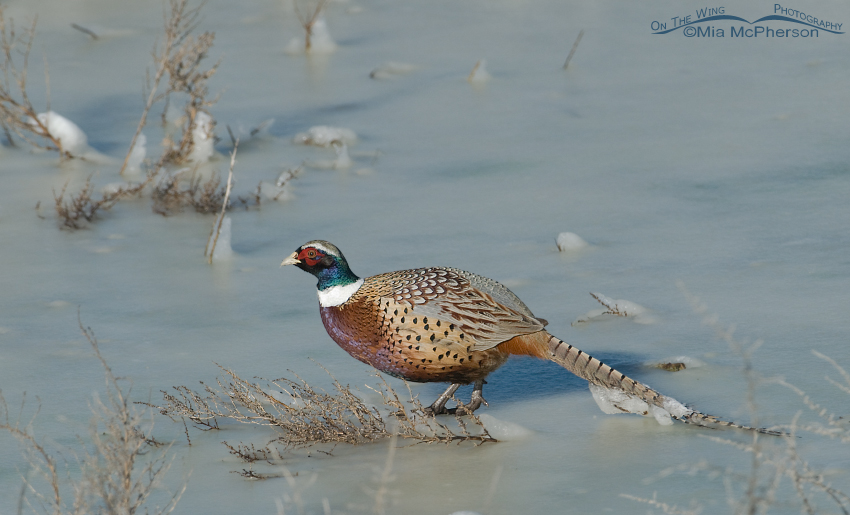 Male Ring-necked Pheasant with ice encrusted tail – D200, f6.3, 1/1600, ISO 400, -0.3 EV, 200-400mm VR with 1.4x TC at 265mm, natural light, not baited
Male Ring-necked Pheasant with ice encrusted tail – D200, f6.3, 1/1600, ISO 400, -0.3 EV, 200-400mm VR with 1.4x TC at 265mm, natural light, not baited
HAPPY NEW YEAR!
This morning started off at 6 degrees Fahrenheit when I woke up shortly after 4 a.m., it is nearly 3 p.m. and it has only reached 18 degrees. Makes me wonder how birds and animals survive the cold, they are far better suited to it than I am!
One of the birds I saw this morning while out photographing was this male Ring-necked Pheasant walking on frozen water with an ice encrusted tail. It must be hard to drag that behind the bird through the snow let alone try to fly with it.
Ring-necked Pheasant are not native to North America, they were unsuccessfully introduced to New York between 1730 and 1733 then successfully introduced into Oregon in 1882. The pheasant was introduced to Utah in 1880. Pheasants were brought to North America because they are a game bird and used for recreational hunting purposes.
Male Ring-necked Pheasants are very colorful and sport red face wattles, iridescent ear tufts, the white neck ring, and bronze colored chest and back with barring. I remember my grandfather using the pheasant feathers for the flies that he tied for fishing.
I was surprised to read that pheasants only live about 4 years. I thought they lived longer than that. They feed on corn, grains, seeds, fruit, grass, and eat insects when they are available.
I hope this pheasant’s tail defrosted today.
Mia
Click here to see more of my Ring-necked Pheasant photos plus facts and information about this species.


Ring neck pheasants are a huge part of my youth, growing up in Michigan I hunted them quite often. Now I just want to sit and look at them. I would love to see some more of your pictures and possibly purchase a couple if available. Thank you and keep shooting {Camera}.
Hi, there, I had a male Ring-necked Pheasant named “Roger” lived up to 5 1/2 years old. my other pheasants live from 4 to 6 years.
Tommy
Hello Tommy, thank you for stopping by and leaving a comment on my Ring-necked Pheasant post. They are very beautiful birds and bring back fond memories of them from my childhood. I didn’t know how long they lived so thank you for that information!